Abstract
The growth of natural bacterial assemblages was monitored in 3-liter reactors under various temperature and substrate concentration conditions. The oxygen concentration was continuously monitored, and subsamples were taken at short time intervals to determine bacterial number and biomass. The rate of bacterial mortality was also determined. Bacterial growth yield was calculated as the ratio of net production (increase in biomass corrected for mortality) to gross production (net production plus oxygen consumption expressed in carbon units). Averaging 33%, the growth yield did not show any trend with temperatures in the range of 8 to 25 degrees C but increased with the concentration of dissolved organic carbon in the range of 2 to 12 mg of C.liter-1.
Full text
PDF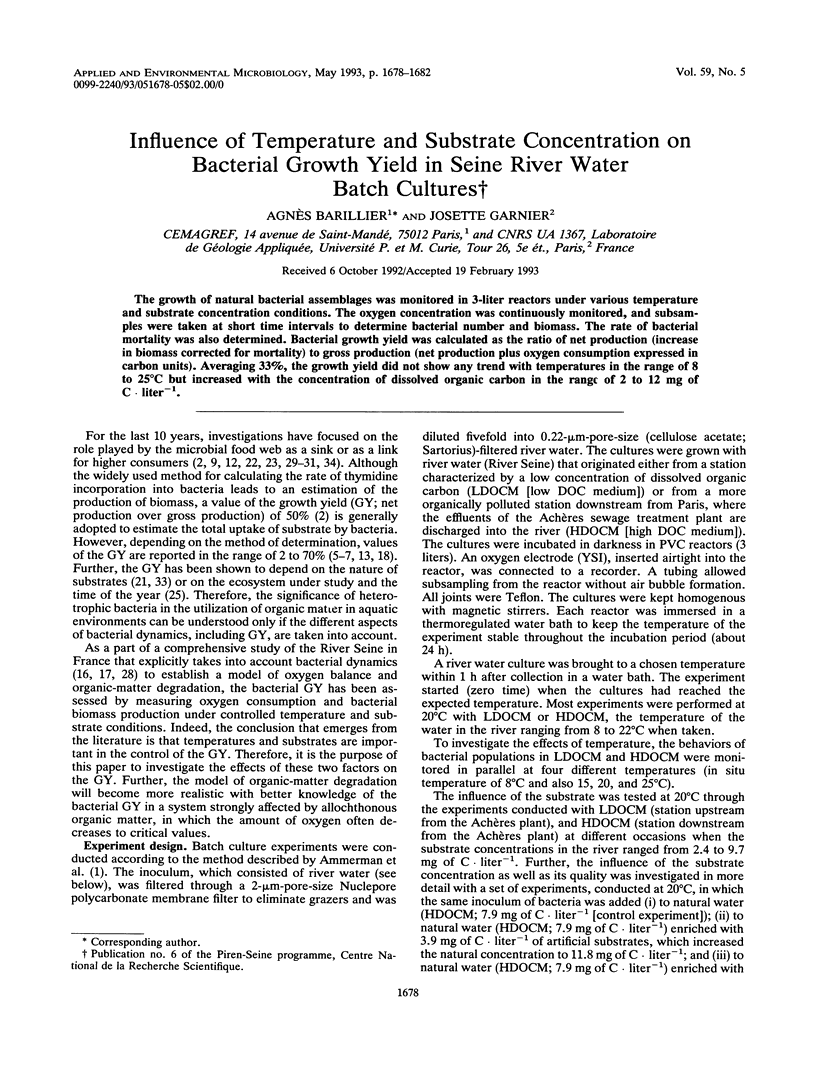
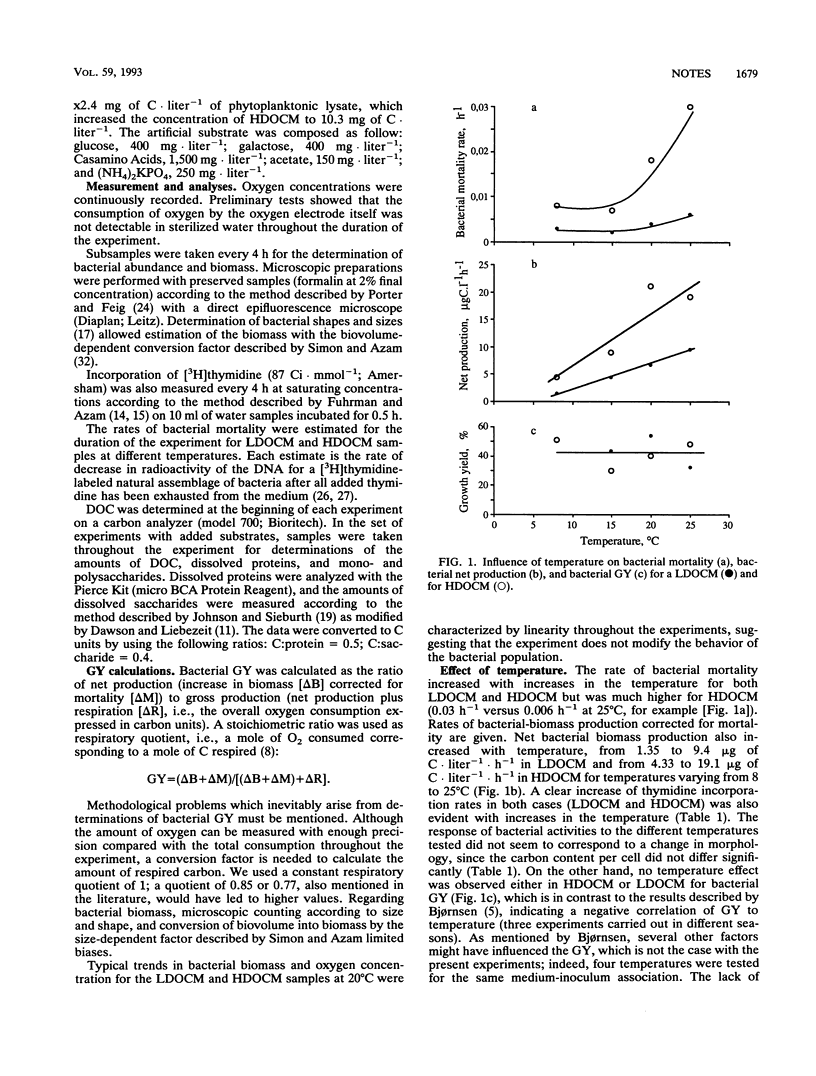
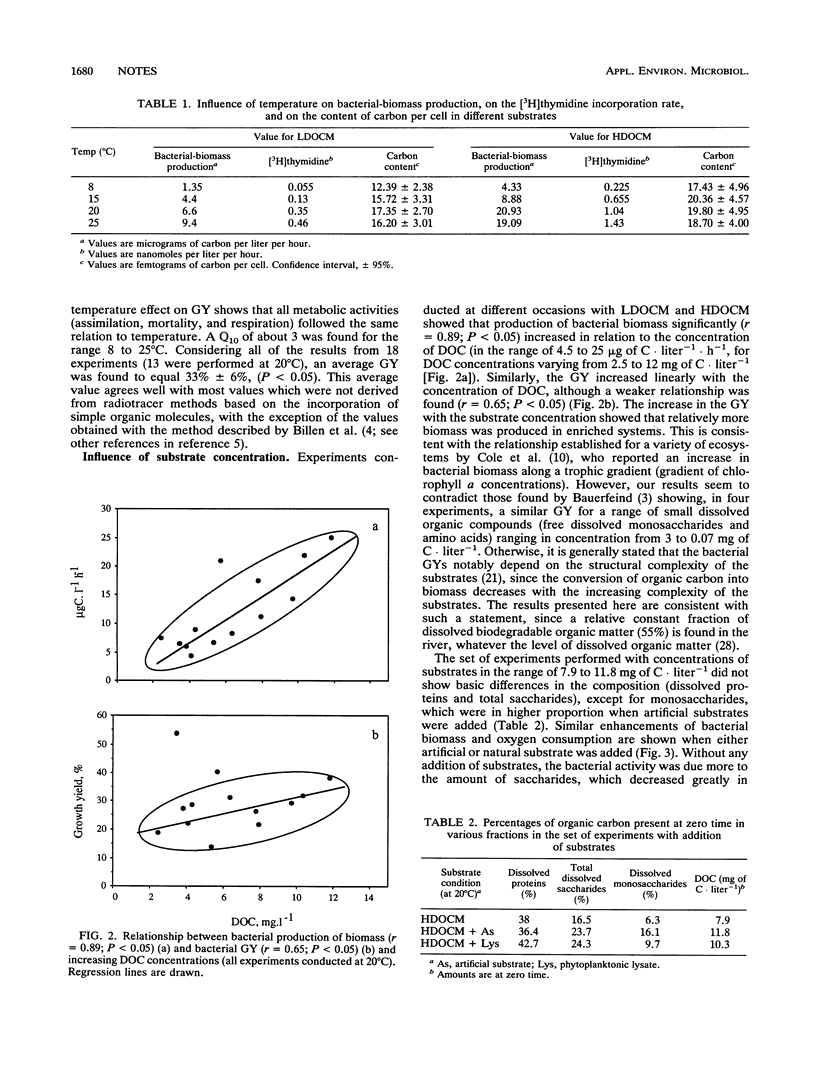
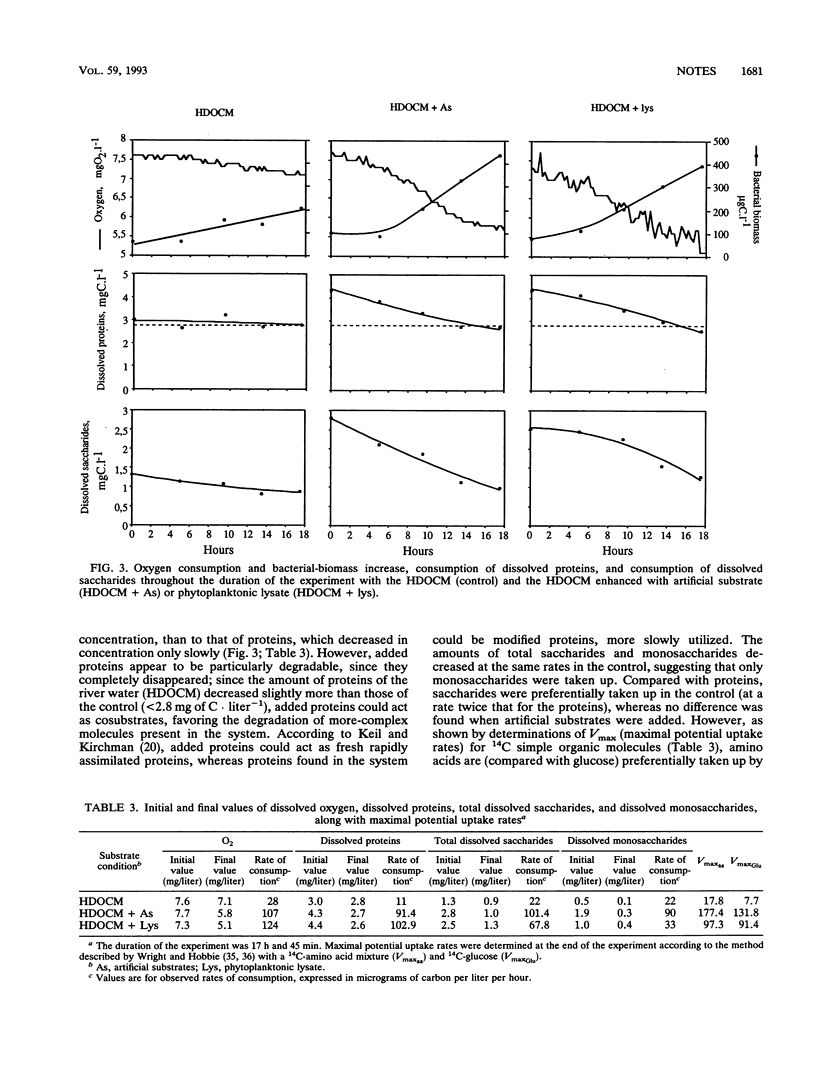
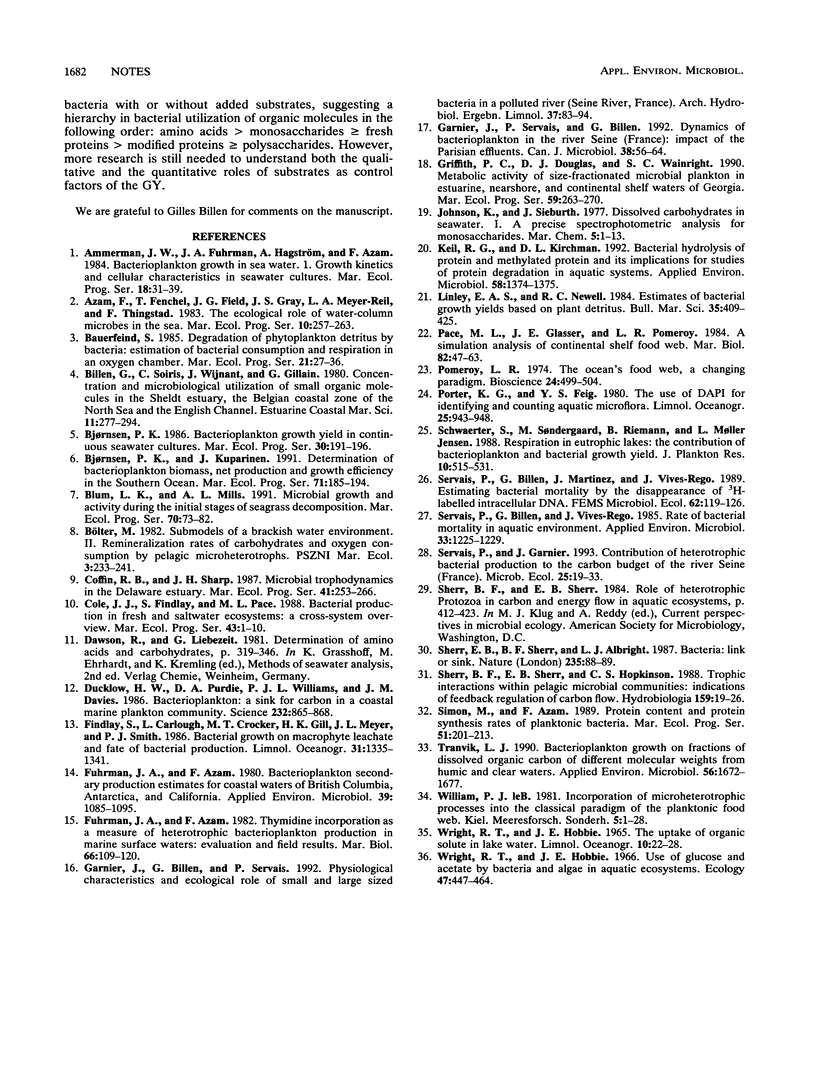
Selected References
These references are in PubMed. This may not be the complete list of references from this article.
- Ducklow H. W., Purdie D. A., Williams P. J., Davies J. M. Bacterioplankton: a sink for carbon in a coastal marine plankton community. Science. 1986 May 16;232(4752):865–867. doi: 10.1126/science.232.4752.865. [DOI] [PubMed] [Google Scholar]
- Fuhrman J. A., Azam F. Bacterioplankton secondary production estimates for coastal waters of british columbia, antarctica, and california. Appl Environ Microbiol. 1980 Jun;39(6):1085–1095. doi: 10.1128/aem.39.6.1085-1095.1980. [DOI] [PMC free article] [PubMed] [Google Scholar]
- Keil R. G., Kirchman D. L. Bacterial hydrolysis of protein and methylated protein and its implications for studies of protein degradation in aquatic systems. Appl Environ Microbiol. 1992 Apr;58(4):1374–1375. doi: 10.1128/aem.58.4.1374-1375.1992. [DOI] [PMC free article] [PubMed] [Google Scholar]
- Tranvik L. J. Bacterioplankton growth on fractions of dissolved organic carbon of different molecular weights from humic and clear waters. Appl Environ Microbiol. 1990 Jun;56(6):1672–1677. doi: 10.1128/aem.56.6.1672-1677.1990. [DOI] [PMC free article] [PubMed] [Google Scholar]


